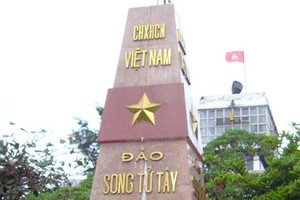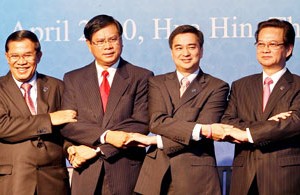Viet Nam has become one of the most attractive places to invest in Southeast Asia, but the country is paying a high cost for luring foreign capital and expertise without any concern for quality. The cost is such that it threatens the country’s sustainable development.

It is an attractive destination, as they say in the tourism industry, and in more ways than one. A fresh wave of investment is crashing on the nation’s shores, as can be seen in the 38 percent year-on-year growth in new investment capital from abroad, which stands at US$7.6 billion at this stage of 2007.
What’s particularly noticeable about this new wave is the escalating number of large-scale projects, a number that has risen more than 50 percent in a year.
Economists say that Viet Nam has set a record in attracting foreign investment thanks to the reforms made since it joined the World Trade Organization. This is good news for the country as foreign investment is one of the factors that will make the country a fully industrialized nation by 2020.
However, this has created a problem in that the greater foreign investment does not guarantee quality, and comes with costs that could prove too much to bear.
In the early stages ten years ago, the country paid some of the cost of food joint ventures by contributing land and infrastructure while the foreign partner supplied the money and know-how.
The prospects were exciting at the time because Viet Nam thought it would enjoy all the profits as well as the taxes, technology and jobs.
The happiness was short-lived and fell by the wayside once the joint ventures turned out to be perennial money losers. The companies claimed their costs were too high, and the Vietnamese partners ended up by selling their stakes to the foreign partners.
The Vietnamese managers were so bad that the foreign partners took over. Once these companies were in “white hands”, so to speak, the big profits began to appear.
A more recent case in point is the auto industry. Viet Nam has opened its door to the world’s leading carmakers because the industry is considered strategic. Here the goal is to adopt new technology and create distinctive made-in-Vietnam vehicles.
In order to achieve this, the government got the foreign partners in the auto joint ventures to agree they would raise the proportion of local content in their vehicles to 40 percent within 10 years. Yet after 12 years the ratio is barely 10 percent.
That’s because the foreign partners consider Viet Nam as only one stage of their production chain, so they merely build assembly plants and exploit the cheap labor to expand their profits.
The cost of growth-at-any-cost can be seen not only in economic terms, but also in the widespread damage to the environment.
Nowadays, thanks to the fierce internal competition to attract foreign capital, many parts of Viet Nam are polluted from the industrial and export processing zones. All they want is to draw in foreign companies and to hell with the environment.
Obviously, the provincial and city governments try to lure foreign investment with all sorts of incentives and promises. However, if we continue to focus only on quantity, not quality, the cost we pay will be immeasurable. Only by choosing quality first can sustainable development be guaranteed.























